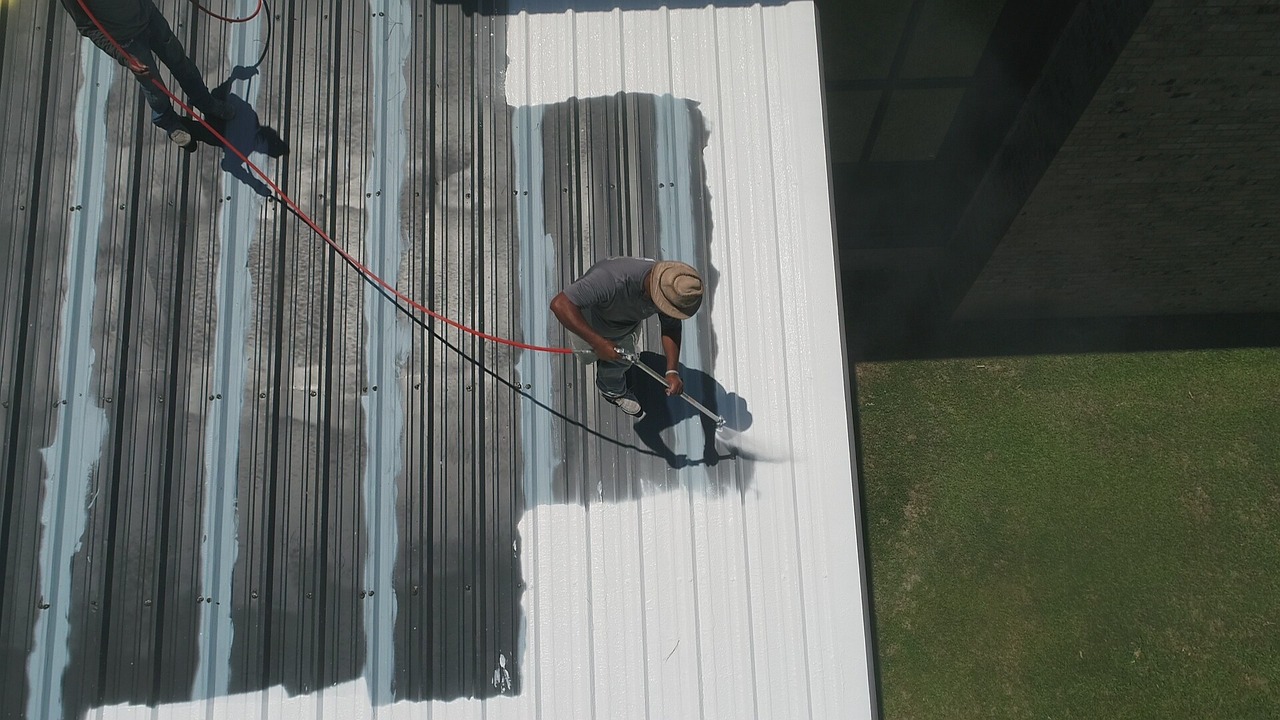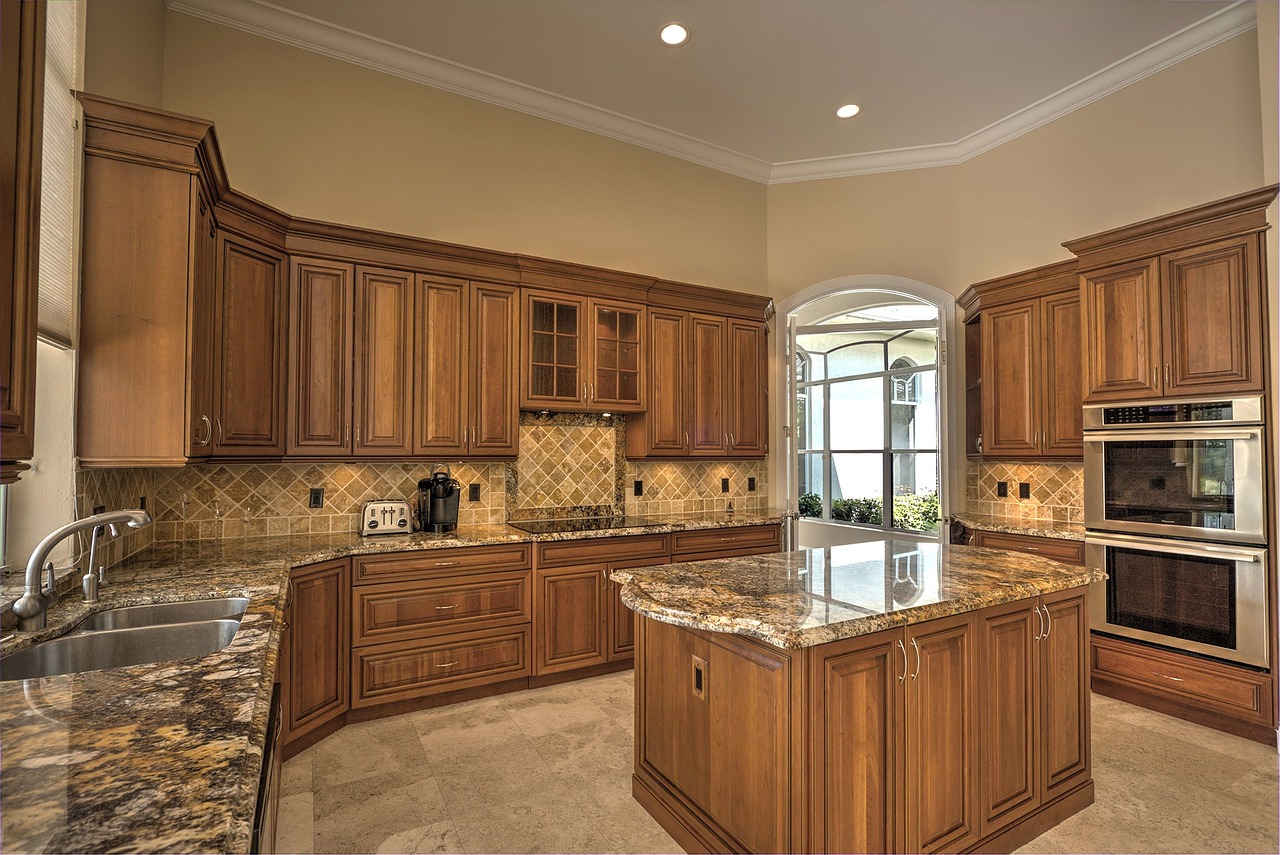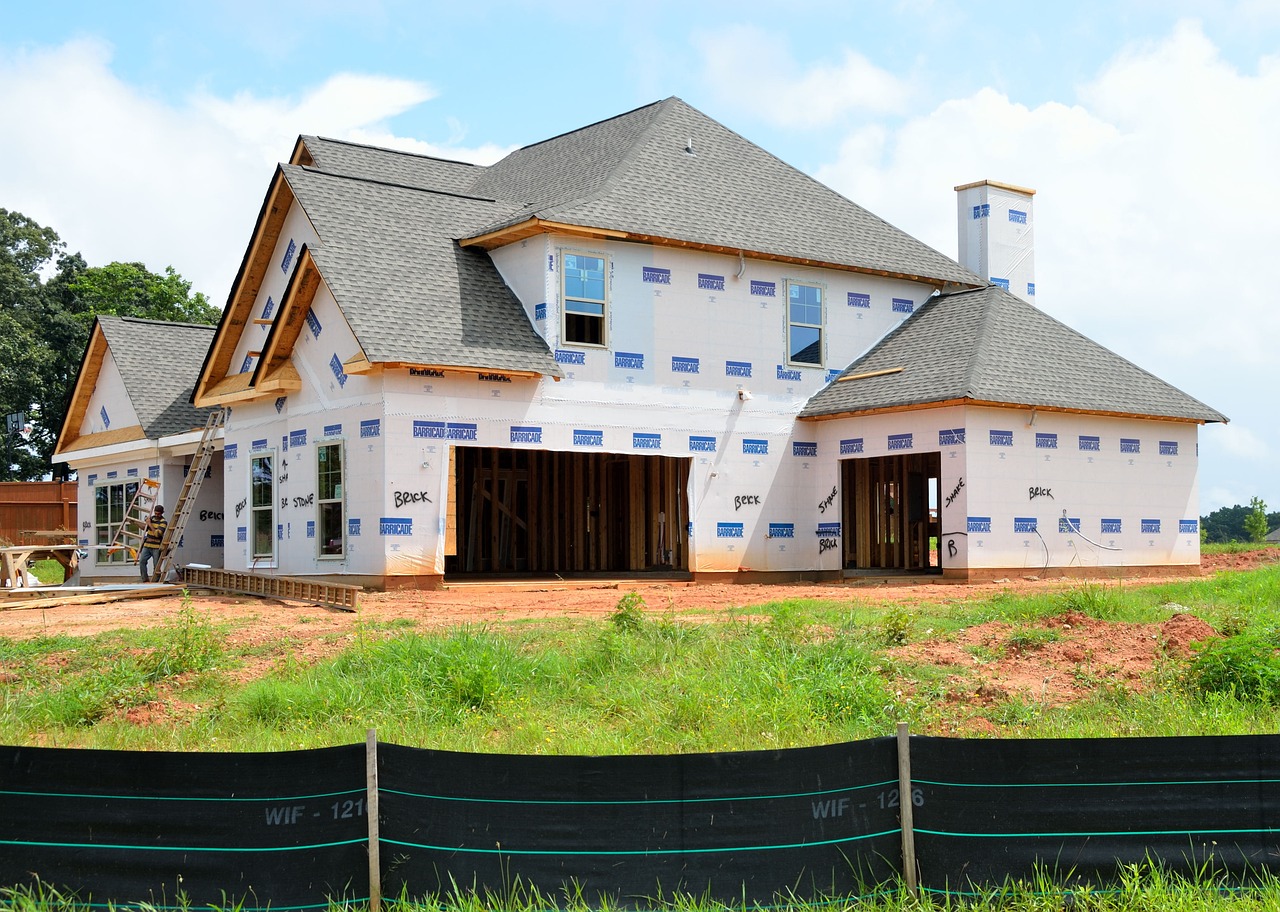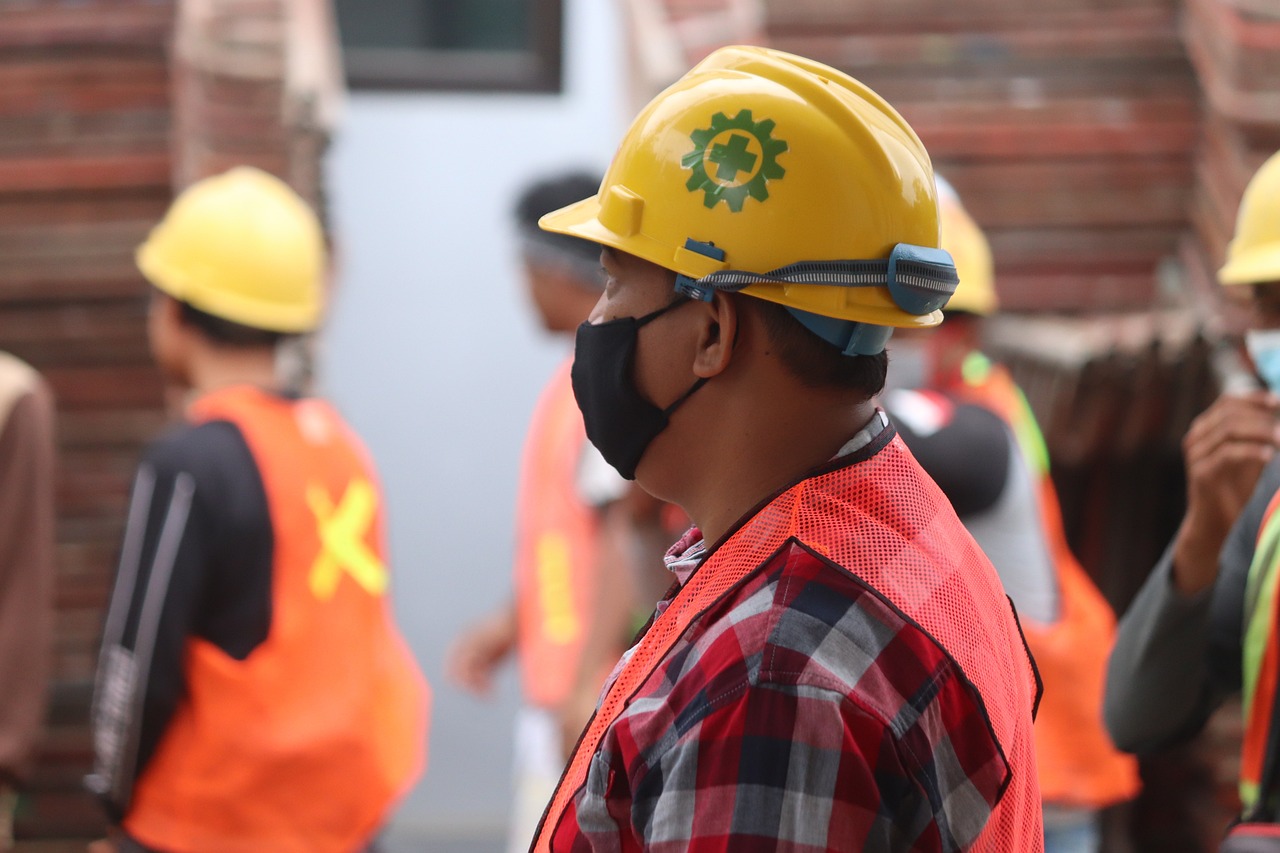Safe Home Remodeling Tips
Embarking on a home remodeling project can feel a bit like stepping into a thrilling adventure. You're not just altering your living space; you're enhancing your **sanctuary**, making it more beautiful and functional. However, just like any adventure, it comes with its own set of challenges and potential hazards. That's why it's crucial to prioritize safety throughout the process. In this article, we'll delve into essential safety tips that will not only protect you and your family but also ensure your remodeling project goes off without a hitch. So, grab your hard hat, and let’s dive into how to make your home improvement journey both exciting and safe!
Effective planning is the bedrock of any successful remodeling project. Think of it as mapping out a treasure hunt; without a clear plan, you might find yourself lost in a sea of paint swatches and tile samples. Start by setting a realistic budget. This involves not just the cost of materials and labor but also a cushion for unexpected expenses. After all, who hasn’t found a hidden plumbing issue behind a wall? Next, create a timeline. This will help you stay organized and on track, ensuring that your project progresses smoothly. Lastly, don’t forget to gather the necessary permits. Depending on your location and the scope of your remodel, this could range from simple notifications to comprehensive applications. Ensuring you have all the right permissions can save you from headaches down the line.
Choosing the right contractors can feel like dating; you want someone who understands your vision and is reliable. A good contractor can transform your ideas into reality, while a poor choice can lead to frustration and disaster. Start your search by asking for recommendations from friends and family. Once you have a list, check their credentials. This includes verifying their licenses and insurance, as these are crucial for protecting yourself from liability in case something goes wrong during the project.
When it comes to hiring contractors, understanding the importance of verifying licenses and insurance can’t be overstated. Think of it as a safety net; it protects you from potential mishaps. Always ask to see their license and ensure it’s up to date. Additionally, request proof of insurance. This will safeguard you from any claims that may arise if a worker gets injured on your property. Remember, a reputable contractor will have no problem providing this information. If they hesitate, consider it a red flag!
Customer feedback can be a goldmine of information when assessing a contractor's reliability. Just like you would check reviews before buying a new gadget, reading online reviews and gathering testimonials from previous clients can provide insight into the contractor’s work ethic and quality. Look for patterns in the feedback; consistent praise for punctuality and communication is a great sign. On the flip side, multiple complaints about missed deadlines or poor workmanship should raise alarms.
Conducting thorough interviews can help you gauge a contractor's expertise and compatibility with your vision. Prepare a list of key questions to ask during the hiring process. Some essential queries might include:
- What is your experience with projects similar to mine?
- Can you provide a detailed estimate?
- What is your approach to handling unexpected issues?
These questions can not only clarify their capabilities but also help you assess their communication style. After all, a remodeling project is a collaboration, and you want a contractor who values your input.
Familiarizing yourself with local safety regulations is essential for compliance and peace of mind. Think of safety regulations as the rules of the road; they exist to keep everyone safe. Depending on your location, there may be specific codes related to electrical work, plumbing, and structural changes. Ignoring these regulations can lead to fines and may even require you to redo work that was not up to code. Research your local regulations or consult with a professional to ensure your project aligns with legal standards.
Safety measures should be a priority during renovations, akin to putting on a seatbelt before driving. Start by safeguarding your home and family from potential hazards associated with remodeling. This includes securing hazardous materials. Properly storing and disposing of items like paint, solvents, and chemicals is vital for safety. Always keep these materials out of reach of children and pets, and follow local guidelines for disposal.
Establishing safety protocols can prevent accidents and ensure a smooth remodeling process. Here are some effective strategies:
- Use protective gear: Ensure that everyone on-site is wearing appropriate safety gear, such as gloves, goggles, and masks.
- Keep the work area organized: A tidy workspace reduces the risk of accidents, so make sure tools and materials are stored properly.
- Communicate clearly: Make sure all team members are aware of their roles and any potential hazards.
By being proactive about safety, you can create a secure environment for everyone involved in the remodeling project.
Q: How can I find a reliable contractor?
A: Start by asking for recommendations from friends and family, check online reviews, and verify their credentials.
Q: What should I include in my remodeling budget?
A: Your budget should include materials, labor, permits, and a cushion for unexpected expenses.
Q: Are permits always necessary for home remodeling?
A: It depends on the scope of your project and local regulations. Always check with your local authorities.
Q: How can I ensure safety during renovations?
A: Use protective gear, keep the workspace organized, and establish clear communication among team members.

Planning Your Remodel
Effective planning is crucial for a successful remodeling project. It’s like laying the foundation for a house; without a solid base, everything else can crumble. So, how do you ensure that your remodel goes off without a hitch? First, you need to set a realistic budget. Think about how much you can afford to spend, and then consider adding a little extra for unexpected expenses. After all, surprises in remodeling can be more common than a cat video going viral! A good rule of thumb is to allocate an additional 10-20% of your total budget for unforeseen costs.
Next up is creating a timeline. This is where you map out when each phase of the project will take place. Are you looking to complete the remodel in a month, or do you have a more leisurely timeframe? Having a clear timeline helps keep everyone on track and can prevent delays. You might want to create a simple table to visualize your timeline:
| Phase | Start Date | End Date |
|---|---|---|
| Planning | Week 1 | Week 2 |
| Demolition | Week 3 | Week 4 |
| Construction | Week 5 | Week 8 |
| Finishing Touches | Week 9 | Week 10 |
Lastly, don’t forget to gather the necessary permits. Depending on where you live, certain renovations may require permits, especially if they involve structural changes, electrical work, or plumbing. It’s essential to check with your local government to ensure compliance with all regulations. Ignoring this step could lead to fines or even having to redo work that was not permitted. Think of it as the rulebook for your remodel; you wouldn’t play a game without knowing the rules, right?
In summary, planning your remodel involves setting a budget, creating a timeline, and ensuring you have all the required permits. By taking these steps, you can pave the way for a smooth and successful remodeling journey. Remember, the better prepared you are, the less likely you are to encounter bumps in the road. So grab your hard hat and get ready to transform your space!

Choosing the Right Contractors
When it comes to remodeling your home, choosing the right contractors can feel like finding a needle in a haystack. It's not just about picking someone with a tool belt; it's about finding a professional who understands your vision and can execute it safely and effectively. The stakes are high, and you want to ensure that your investment is in good hands. So, how do you sift through the options and land on the perfect contractor for your project? Let's break it down!
First and foremost, you need to do your homework. Start by asking friends, family, or neighbors for recommendations. Word of mouth is powerful, and personal experiences can guide you toward trustworthy professionals. Once you have a list of potential contractors, it's time to dig deeper. Check their online presence. A well-maintained website or active social media accounts can be a good sign of a contractor's credibility and commitment to their craft.
Next, you should assess their qualifications. Look for contractors who have the necessary licenses and insurance. This step is crucial not just for ensuring quality work but also for protecting yourself from potential liabilities. A contractor without proper insurance can leave you vulnerable if accidents occur on your property. When reviewing credentials, consider the following:
| Credential | Importance |
|---|---|
| License | Ensures the contractor meets local regulations and standards. |
| Insurance | Protects you from liability in case of accidents or damage. |
| Certifications | Demonstrates specialized training in specific areas. |
Now that you’ve narrowed down your options, it’s time to interview potential contractors. This is your chance to gauge their expertise and see if they’re a good fit for your project. Prepare a list of questions that cover their experience, approach to safety, and how they handle unexpected challenges. Here are a few questions to consider:
- What is your experience with projects similar to mine?
- Can you provide references from previous clients?
- How do you ensure safety on the job site?
- What is your estimated timeline for completion?
During the interview, pay attention not only to their answers but also to how they communicate. A good contractor should be open, transparent, and willing to discuss all aspects of the project with you. If they seem evasive or dismissive, it might be a red flag.
Lastly, don’t forget to check reviews and testimonials. Websites like Yelp or Angie’s List can provide valuable insights into a contractor’s reliability and quality of work. Look for patterns in feedback—if multiple clients mention the same issue, it’s worth taking note. Remember, a contractor’s reputation is built on their past work, and you want someone who values their clients and delivers on promises.
In conclusion, choosing the right contractor is a critical step in your remodeling journey. By doing your research, asking the right questions, and trusting your instincts, you can find a professional who will not only meet your expectations but exceed them. After all, your home is your sanctuary, and it deserves the best!

Assessing Contractor Credentials
When it comes to remodeling your home, selecting the right contractor is a crucial step that can significantly impact the outcome of your project. You wouldn’t trust just anyone to perform surgery on you, right? Similarly, you need to ensure that the contractor you choose has the necessary qualifications and experience to handle your remodeling needs. Start by checking for licenses—these are often required by state or local governments to ensure that contractors meet specific standards. A contractor without a license is like a ship without a sail; they may not be equipped to navigate the complexities of your project.
Next, make sure the contractor has adequate insurance coverage. This is essential not just for their protection, but also for yours. If an accident occurs during the remodeling process, you want to ensure that you’re not left footing the bill. Ask for proof of insurance and verify that it covers both liability and worker’s compensation. If they can’t provide this documentation, it’s a major red flag!
In addition to licenses and insurance, consider the contractor's experience in the specific type of remodeling you’re undertaking. For instance, if you’re planning a kitchen remodel, you’ll want someone who specializes in that area. Ask potential contractors about their previous projects, and don’t shy away from asking for references. A reputable contractor should be more than willing to provide you with a list of satisfied clients. You can also take it a step further by checking their online presence—websites, social media, and platforms like Yelp or Angie’s List can give you a broader perspective on their work quality.
To summarize, here are the key credentials to look for when assessing contractors:
- Licenses: Verify that they are licensed in your state.
- Insurance: Ensure they have liability and worker’s compensation insurance.
- Experience: Look for contractors with experience in your specific type of remodel.
- References: Don’t hesitate to ask for and check references from past clients.
By taking the time to assess these credentials, you’ll not only protect yourself from potential pitfalls but also set the stage for a successful remodel. Remember, a well-informed homeowner is a powerful homeowner. So, do your homework, and you’ll find a contractor who can turn your vision into reality!

Reading Reviews and Testimonials
When it comes to hiring contractors for your remodeling project, is like peering through a window into their past work. It's essential to understand that these reviews are not just a bunch of stars and comments; they are your golden ticket to gauging a contractor's reliability and quality of service. Think of it as a treasure map—each review can lead you closer to finding the right professional who will turn your vision into reality.
Start by exploring various platforms where contractors are reviewed, such as Google, Yelp, or specialized home improvement websites. These platforms often provide a plethora of insights from previous clients. Look for patterns in the feedback: Are clients consistently praising the contractor for their punctuality and craftsmanship? Or are there red flags, such as complaints about missed deadlines or poor communication? These patterns can help you make an informed decision.
Moreover, consider the context of the reviews. A single negative review among a sea of positive ones may not be a dealbreaker, but if several reviews point to similar issues, it’s worth taking note. For instance, if multiple clients mention that a contractor left the job site messy, it might indicate a lack of professionalism. On the other hand, if clients rave about the contractor's attention to detail and ability to stay within budget, that's a strong indicator of their competency.
Additionally, don’t shy away from asking the contractor for testimonials from previous clients. A reputable contractor should be more than willing to share their success stories. If they hesitate or provide vague references, consider it a warning sign. When you do get testimonials, reach out to those clients if possible. A quick chat can provide deeper insights into the contractor's work ethic and reliability.
In summary, reading reviews and testimonials is a crucial step in the contractor selection process. They not only offer a glimpse into the contractor's past performance but also help you avoid potential pitfalls. By taking the time to do your homework, you increase your chances of a smooth and successful remodeling experience. Remember, a well-informed homeowner is a powerful homeowner!
- How do I know if a review is genuine? Look for detailed feedback that includes specific aspects of the contractor's work. Generic comments are often less reliable.
- What if I find a mix of positive and negative reviews? Assess the overall trend. If most reviews are positive, it may indicate that the contractor is generally reliable.
- Can I trust testimonials from the contractor? Yes, but verify them by reaching out to the clients if possible to get firsthand accounts of their experiences.
- Where should I look for contractor reviews? Popular platforms include Google, Yelp, Angie's List, and specialized home improvement websites.

Interviewing Potential Contractors
When it comes to hiring a contractor for your home remodeling project, interviewing potential candidates is a crucial step that shouldn't be overlooked. Think of it like dating; you wouldn’t commit to someone without getting to know them first, right? The same principle applies here. This is your chance to assess their expertise, communication style, and overall compatibility with your project. So, what should you ask to ensure you're making the right choice?
First off, start with the basics. Ask about their experience and qualifications. How long have they been in the business? What types of projects have they completed? This will give you a clear picture of their background and whether they have the necessary skills for your specific remodeling needs. You might also want to inquire about their team; are they working with subcontractors or do they have a dedicated crew? Understanding their operational structure can help you gauge the reliability of the work.
Next, dive into the nitty-gritty of their project management approach. Ask how they handle timelines and budgets. A good contractor should have a clear plan for managing both, and they should be able to provide you with a detailed estimate. Here’s where you can also discuss potential challenges that might arise during the project. A seasoned contractor will have strategies in place to address issues proactively, ensuring that your remodel stays on track and within budget.
Another important aspect to cover is their communication style. You want someone who is responsive and willing to keep you in the loop throughout the remodeling process. Ask how often they will provide updates and through what means (email, phone calls, in-person meetings). Clear communication can significantly reduce stress and misunderstandings as the project progresses.
Don't forget to ask about their licensing and insurance. This is non-negotiable! Ensure that they hold the necessary licenses to operate in your area and have adequate insurance coverage. This protects you from potential liabilities and ensures that you're working with a professional who adheres to local regulations.
Lastly, consider asking for references. A reputable contractor should be more than willing to provide you with a list of past clients. Reach out to these references and ask about their experiences. Were they satisfied with the work? Did the contractor meet deadlines? Were there any issues during the project? Gathering this feedback can help you make a well-informed decision.
In summary, interviewing potential contractors is all about gathering information and building a rapport. By asking the right questions and paying attention to their responses, you can find a contractor who not only meets your remodeling needs but also aligns with your vision for your home. Remember, this is a partnership, and the right contractor will make your remodeling experience enjoyable and stress-free.
- What should I look for in a contractor? Look for experience, proper licensing, insurance, and positive references.
- How do I know if a contractor is reliable? Check reviews, ask for references, and gauge their communication skills during the interview.
- What questions should I ask during the interview? Ask about their experience, project management approach, communication style, and references.
- How important is it to check a contractor's insurance? It's crucial! Insurance protects you from liability in case of accidents or damages during the project.

Understanding Safety Regulations
When embarking on a remodeling adventure, it’s crucial to wrap your head around the maze of safety regulations that govern construction activities. These regulations are not just bureaucratic red tape; they exist to protect you, your family, and your property from potential hazards. Imagine diving into a swimming pool without knowing how deep it is—risky, right? Similarly, navigating your remodeling project without understanding safety regulations can lead to costly mistakes and dangerous situations.
First and foremost, familiarize yourself with the local building codes. These codes outline the minimum safety standards for construction projects and can vary significantly from one location to another. For instance, what’s acceptable in a rural area may not fly in an urban setting. Typically, local building departments provide resources to help homeowners understand these codes. Don’t hesitate to reach out to them; they’re there to help!
Additionally, your remodeling project may require various permits. Think of permits as your golden ticket to ensure that everything is up to snuff. They not only ensure compliance with safety regulations but also protect you from future liabilities. If you skip this step, you could face fines, or worse, be forced to undo completed work. So, before you grab that hammer, check if you need a permit for your project.
Another critical aspect is understanding the safety regulations related to specific materials you plan to use. For example, if your remodeling involves electrical work, it’s essential to comply with the National Electrical Code (NEC). This code sets the standards for safe electrical installations and helps prevent electrical fires. Similarly, if you’re dealing with plumbing, familiarize yourself with the plumbing codes in your area to avoid potential leaks and water damage.
Moreover, consider the environmental safety regulations that may apply to your project. If your remodel involves the removal of lead paint or asbestos, you must adhere to strict safety protocols. Ignoring these regulations can not only jeopardize your health but also lead to hefty fines. Therefore, if you're uncertain about the materials in your home, it’s wise to consult a professional who can guide you through the process safely.
Lastly, always stay informed about changes in safety regulations. Building codes and safety standards can evolve, and being aware of these changes can save you from headaches down the line. You can subscribe to updates from local building departments or join community forums where such topics are discussed. This proactive approach will not only keep your project compliant but also enhance your overall peace of mind.
In summary, understanding safety regulations is a foundational step in any remodeling project. By familiarizing yourself with local building codes, obtaining necessary permits, and staying informed about material safety, you can turn your remodeling dreams into reality without compromising safety. Remember, a well-informed homeowner is a safe homeowner!
- What are the most common safety regulations I should know? The most common regulations include local building codes, electrical codes, plumbing codes, and environmental safety regulations.
- Do I need a permit for my remodeling project? It depends on the scope of your project. Generally, major renovations, electrical work, and plumbing changes require permits.
- How can I find out about local building codes? You can contact your local building department or visit their website for resources and guidance on building codes applicable to your area.
- What should I do if I find hazardous materials like lead paint? Consult a professional who specializes in hazardous material removal to ensure safe handling and disposal.

Protecting Your Home and Family
When it comes to remodeling your home, the excitement of creating a new space can sometimes overshadow a crucial aspect: safety. It’s essential to prioritize the well-being of your family and the integrity of your home throughout the remodeling process. After all, what good is a beautiful new kitchen if it poses safety risks? By implementing a few strategic measures, you can ensure that your home remains a sanctuary during renovations.
First and foremost, it’s vital to secure hazardous materials. Many homeowners underestimate the dangers posed by common construction substances such as paints, solvents, and adhesives. These materials often contain volatile organic compounds (VOCs) that can be harmful if inhaled. To mitigate these risks, always store hazardous materials in a cool, dry place, away from children and pets. Use child-proof locks on cabinets where these items are stored and label everything clearly. When it comes time to dispose of these materials, follow your local regulations for hazardous waste disposal to ensure they are handled safely.
In addition to securing materials, establishing safety protocols is paramount. Think of your home during a remodel as a construction site; it’s vital to create a safe working environment. This can include:
- Setting clear boundaries: Use tape or barriers to mark off areas that are off-limits to children and pets.
- Using personal protective equipment (PPE): Ensure that anyone working on the project wears appropriate gear, such as gloves, goggles, and masks, especially when dealing with dust or chemicals.
- Keeping a first aid kit readily available: Accidents can happen, even with the best precautions. Having a first aid kit on hand can make a difference in case of minor injuries.
Moreover, it’s essential to communicate with your family about the remodeling process. Explain what areas will be under construction and why certain precautions are necessary. This not only helps children understand the importance of safety but also fosters a sense of responsibility. Encourage them to ask questions and express any concerns they might have. Open communication can significantly reduce anxiety and create a more cooperative environment.
Lastly, don’t forget to regularly check in on the progress of the remodel. This means not just overseeing the aesthetic aspects but also ensuring that safety measures are being followed diligently. If you notice anything concerning, address it immediately. Remember, your home is not just a structure; it’s where your family lives, grows, and makes memories. Keeping it safe during renovations is a responsibility that should never be taken lightly.
Q: What should I do if I find hazardous materials in my home?
A: If you discover hazardous materials, such as old paint or chemicals, contact your local waste disposal facility for guidance on proper disposal methods. Never throw them in the regular trash.
Q: How can I ensure my children are safe during a remodel?
A: Establish clear boundaries and communicate with your children about which areas are off-limits. Consider using safety gates or barriers to prevent access to construction zones.
Q: What are some signs that a contractor is not following safety protocols?
A: Signs may include lack of PPE among workers, unmarked hazardous materials, or unsafe storage of tools and equipment. If you notice these issues, address them with your contractor immediately.

Securing Hazardous Materials
When diving into a remodeling project, one of the most critical aspects that often gets overlooked is the proper handling and securing of hazardous materials. These materials can range from paints and solvents to adhesives and cleaning agents, all of which can pose significant risks if not managed correctly. Imagine starting your dream renovation only to find yourself facing health hazards or environmental issues due to improper storage or disposal of these substances. It’s essential to understand that safety should always come first.
To keep your home and family safe, here are some vital practices to consider:
- Store Properly: Always keep hazardous materials in their original containers with labels intact. This not only ensures that you know what you're dealing with but also helps in identifying any potential hazards.
- Ventilation is Key: When working with volatile substances, ensure that your workspace is well-ventilated. Open windows and use fans to circulate air, reducing the risk of inhaling harmful fumes.
- Secure Storage: Store hazardous materials out of reach of children and pets. Consider using locked cabinets or shelves to prevent accidental exposure.
Additionally, it’s crucial to follow local regulations regarding the disposal of hazardous materials. Many communities have specific guidelines for disposing of items like paints and chemicals, which often require taking them to designated drop-off sites. Ignoring these regulations can lead to fines and pose environmental risks.
Another important aspect is recognizing the signs of hazardous materials. For instance, if you notice any unusual odors, leaks, or discoloration in your storage area, address these issues immediately. It’s better to be proactive than reactive when it comes to safety.
Finally, consider investing in safety equipment. Personal protective equipment (PPE) such as gloves, masks, and goggles can provide an additional layer of protection when handling hazardous materials. Think of it as your safety armor; just as a knight wouldn’t go into battle without their gear, you shouldn’t tackle your remodeling project without the right protective measures.
By following these guidelines, you can ensure that your remodeling project is not only beautiful but also safe for everyone involved. Remember, the goal is to create a welcoming and functional space without compromising the health and safety of your family.
Q: What should I do if I accidentally spill hazardous materials?
A: If you spill hazardous materials, immediately follow the instructions on the label for cleanup. Wear appropriate PPE and ensure the area is well-ventilated. If the spill is significant, contact local authorities for assistance.
Q: How can I find out about local disposal regulations for hazardous materials?
A: Check your local government's website or contact your waste management department for guidelines on disposing of hazardous materials in your area.
Q: Are there eco-friendly alternatives to hazardous materials?
A: Yes! Many companies now offer eco-friendly paints, solvents, and adhesives that are less harmful to both health and the environment. Research these options before starting your project.

Implementing Safety Protocols
When diving into a remodeling project, it's not just about aesthetics or functionality; safety should be your top priority. Think of your home as a fortress, and just like any fortress, it needs proper defenses to keep everyone inside safe. Implementing effective safety protocols can help you create a secure environment for both workers and family members. So, how do you go about establishing these protocols?
First and foremost, communication is key. Before any work begins, gather everyone involved—contractors, workers, and even family members—and discuss the safety measures that will be in place. This conversation should cover everything from the use of personal protective equipment (PPE) to emergency procedures in case something goes awry. Imagine it as a pre-game huddle where everyone knows their role and the game plan. For example, make sure everyone is equipped with hard hats, goggles, and gloves when necessary.
Next, you should establish clear boundaries within your home. This includes designating specific areas for work and restricting access to those areas. You might want to put up signage or barriers to keep children and pets away from construction zones. Think of it like creating a no-fly zone; it’s all about keeping the curious and the innocent out of harm's way. Additionally, ensure that tools and materials are stored safely and securely at the end of each day. Leaving tools scattered around is like leaving a treasure map for accidents to happen.
Another integral part of your safety protocol is to conduct regular safety meetings. These meetings serve as checkpoints to address any concerns, review safety practices, and adapt to any new hazards that may arise as the project progresses. It’s similar to a pit stop in a race—taking a moment to evaluate performance and make necessary adjustments can lead to a smoother ride overall.
Moreover, make sure that all workers are trained on the specific safety protocols you’ve established. This training should include how to properly handle tools, use equipment, and recognize potential hazards. It’s crucial that everyone is on the same page and understands the importance of these protocols. Just like a well-rehearsed dance, everyone should know their steps to avoid stepping on each other's toes—or worse, causing accidents.
Lastly, keep a first aid kit readily available on-site. Accidents can happen, and being prepared can make all the difference. Make sure that someone on-site is trained in basic first aid, and consider having emergency contact numbers posted prominently. This is your safety net, ensuring that if something does go wrong, you can respond swiftly and effectively.
In summary, implementing safety protocols during your remodeling project is not just a good idea; it’s essential. By fostering open communication, setting clear boundaries, conducting regular meetings, providing adequate training, and preparing for emergencies, you create a safe environment that allows your project to proceed smoothly. Remember, safety isn’t just a protocol; it’s a mindset that protects your home and loved ones.
- What are some common safety hazards during home remodeling?
Common hazards include falls, electrical shocks, and exposure to hazardous materials. Always be aware of your surroundings and take precautions to mitigate these risks. - How can I ensure my contractors follow safety protocols?
Before hiring, discuss your safety expectations and ask about their safety training and certifications. Regular check-ins during the project can also help maintain safety standards. - What should I do if I see unsafe practices on-site?
Address your concerns immediately with the contractor or supervisor. Safety should always come first, and it's crucial to speak up if you notice something that seems off.
Frequently Asked Questions
- What are the first steps I should take before starting a remodeling project?
Before diving into a remodeling project, it's crucial to lay a solid foundation. Start by setting a realistic budget that encompasses all possible expenses, including materials and labor. Next, create a timeline that outlines each phase of the project. Don't forget to check if you need any permits; this can save you from potential headaches later on!
- How do I find the right contractor for my remodeling project?
Finding the right contractor is like dating—you want someone who matches your vibe! Start by asking friends and family for recommendations, and then do your homework. Check online reviews and testimonials to gauge their reliability. Once you have a shortlist, interview potential contractors and ask them about their experience, safety protocols, and past projects. This will help you find a trustworthy partner for your renovation.
- What safety regulations should I be aware of during remodeling?
Safety regulations can vary by location, so it’s essential to familiarize yourself with local laws. Common regulations may include guidelines for electrical work, plumbing, and structural changes. Checking with your local building authority can provide clarity on what permits and inspections are necessary. Following these regulations not only keeps you compliant but also ensures a safer environment for everyone involved.
- How can I protect my family during a remodeling project?
Safety should always be your top priority! To protect your family, secure the work area by using barriers or signage to keep children and pets away from hazardous zones. Ensure that hazardous materials, like paints and solvents, are stored safely and out of reach. Implementing safety protocols, such as requiring contractors to wear protective gear, can also go a long way in creating a safe environment.
- What should I do with hazardous materials during remodeling?
Handling hazardous materials requires caution. Always store them in clearly labeled containers and keep them out of reach of children and pets. When it’s time to dispose of these materials, follow local guidelines for hazardous waste disposal. Many communities have special collection days or drop-off locations for items like paint and solvents, so be sure to take advantage of those resources!
- How can I ensure a safe working environment during my remodel?
Establishing safety protocols is key! Make sure everyone involved in the project understands the safety measures in place. This includes wearing appropriate personal protective equipment (PPE) and keeping the workspace organized to prevent accidents. Regularly inspect the area for potential hazards and encourage open communication about safety concerns among workers. A proactive approach can make all the difference!


















